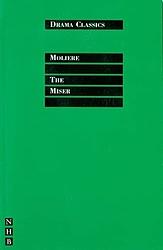The Miser by Molière
"The Miser" is a comedic play that revolves around a wealthy man who is so obsessed with his money that he neglects his own children. His son and daughter, both in love with people they cannot afford to marry due to their father's stinginess, scheme to trick him out of his wealth. The play satirizes the greed and hypocrisy of the upper class, while exploring themes of love, deception, and the value of money.
The 1890th greatest book of all time
If you're interested in seeing the ranking details on this book go here
This book is on the following lists:
- 499th on The 500 best books of all time from Culture Café users (Culture Café)
- Great Books of the Western World (Great Books Foundation)
- Harold Bloom's The Western Canon (The Western Canon (Book) by Harold Bloom)

